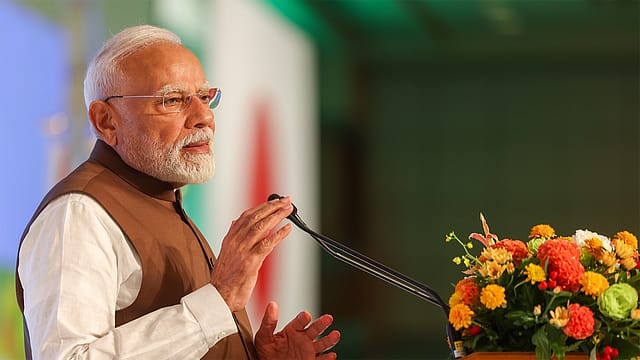Mumbai's urban mobility transforms to the next level, PM Modi to flag off fully underground metro
ADVERTISEMENT

Ushering in a major milestone in Mumbai city's urban transport transformation, Prime Minister Narendra Modi will today dedicate to the nation Phase 2B of Mumbai Metro Line-3 (Aqua Line) - Mumbai’s first and only fully underground metro line.
The final Phase 2B of the Aqua Line stretches from Acharya Atre Chowk to Cuffe Parade, constructed at an estimated cost of around Rs. 12,200 crore. The final Phase with 11 stations will provide seamless connectivity to South Mumbai’s heritage and cultural districts, such as Fort, Kala Ghoda, and Marine Drive, along with direct access to key administrative and financial hubs, including the Bombay High Court, Mantralaya, Reserve Bank of India (RBI), Bombay Stock Exchange (BSE), and Nariman Point.
The Mumbai Metro Line–3, spanning 33.5 km from Cuffe Parade to Aarey JVLR with 27 stations, will cater to 13 lakh passengers daily. The total cost of the project was over Rs. 37,270 crore. The first phase, from Aarey Colony to BKC with 10 stations, took off on October 7, 2024. In the second phase, BKC to Worli was connected with six stations and opened to the public on May 9.
The Metro Line-3, also known as the Colaba-Bandra-Seepz Line, has been designed to ensure efficient integration with other modes of transport, including railways, airports, other metro lines, and monorail services, thereby enhancing last-mile connectivity and reducing congestion across the metropolitan region. The Aqua Line is expected to reduce road congestion as well as the load on the Western Line suburban network between Bandra and Churchgate. The Mumbai Metro Rail Corporation Limited (MMRCL) will operate the project.
November 2025
The annual Fortune India special issue of India’s Best CEOs celebrates leaders who have transformed their businesses while navigating an uncertain environment, leading from the front.
Though the project was given go go-ahead in 2011, it got delayed due to construction challenges in building an underground metro beneath the bustling city. Various infrastructure expert companies bid for the project concessions. The Cuffe Parade – CST section was constructed by a joint venture of Larsen & Toubro and Shanghai Tunnel Engineering Co. The second section from CST to Mumbai Central was built by a joint venture of Hindustan Construction Co. and Moscow Metrostroy. The third section of Mumbai Central to Worli was constructed by a joint venture of Soma Enterprises and Turkey-based infrastructure major Dogus. A joint venture of Continental Engineering Corp, ITD Cementation, and Tata Projects completed the Worli – Dharavi section. The Mumbai Metro Rail Corporation (MMRC) was responsible for building the line.
One highlight of the project is a 170-metre-long twin-tunnel passing under the Mithi river between Bandra Kurla Complex and Dharavi stations, the second under-river metro rail tunnel in India, after the Kolkata Metro's Green Line that connects Howrah Maidan to Salt Lake Sector-V via an underwater tunnel under the Hooghly River.
